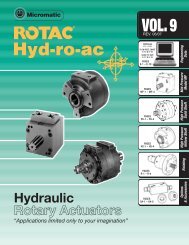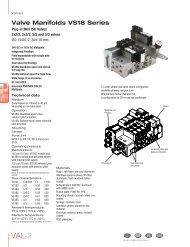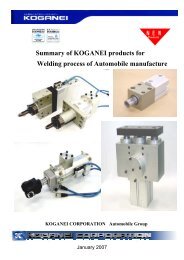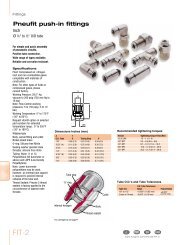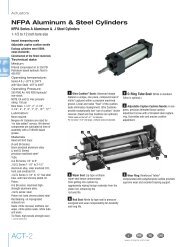Canfield Connector Buyer's Guide
Canfield Connector Buyer's Guide
Canfield Connector Buyer's Guide
You also want an ePaper? Increase the reach of your titles
YUMPU automatically turns print PDFs into web optimized ePapers that Google loves.
Timing Diagrams con't<br />
Delay On Break (Normally On)<br />
Function #6<br />
When power is applied, load is energized and remains<br />
energized until the trigger switch is closed. Load is then<br />
Off for ∆Τ c + ∆Τ. Reset occurs when load is On and the<br />
trigger is re-applied.<br />
Refer to charts 1 and 3 on page 77 for switch settings.<br />
*Trigger Output #2 level is always opposite of Trigger Output #1.<br />
Delay On Make (Normally Off)<br />
Function #7<br />
When power is applied, load remains Off. Load is energized<br />
for ∆Τ only upon closure of a normally open<br />
momentary contact switch (trigger). Reset occurs when<br />
load is Off and the trigger switch is closed.<br />
Refer to charts 1 and 3 on page 77 for switch settings.<br />
*Trigger Output #2 level is always opposite of Trigger Output #1.<br />
Delay On Make (Normally On)<br />
Function #8<br />
When power is applied, load is energized. Load deenergizes<br />
for ∆Τ only upon closure of a normally open<br />
momentary contact switch (trigger). Reset occurs<br />
when load is On and the trigger switch is closed.<br />
Refer to charts 1 and 3 on page 77 for switch settings.<br />
*Trigger Output #2 level is always opposite of Trigger Output #1.<br />
Toggle<br />
Function #9a / 9b<br />
When power is applied, load is On. Load switches state<br />
(On/Off) with each application of trigger<br />
Refer to chart 3 on page 77 for switch settings.<br />
MBT<br />
*Trigger Output #2 level is always opposite of Trigger Output #1.<br />
79




